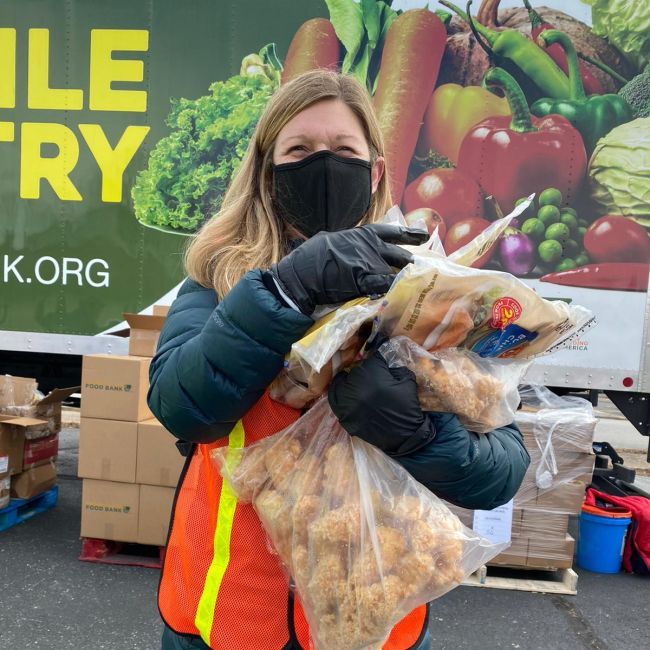
As the coronavirus pandemic continues in the United States, Feeding America and its network of 200 food banks are responding to the increased need every day. We know you have questions about food banks’ response to the coronavirus. Below, we’ve answered the most common questions we’ve gotten on social media.
Q: What impact will COVID-19 have on people already living paycheck-to-paycheck?
A: For people already living paycheck-to-paycheck, COVID-19 is making life even more challenging. Many people in this situation are already making tough choices between food and bills, or food and medicine. When hours are cut, or jobs are lost completely – as they have been recently – those choices become even more difficult. Often, families won’t have enough money to purchase a 14-day supply of food or don’t have enough savings to cover bills if their income is compromised. For those people, and for everyone impacted in need of food, Feeding America’s food banks are responding every day, connecting those in need with healthy food.
Q: With schools closed, how are children getting meals?
A: Nearly 55 million students are out of school as districts across the country shut down to curb the spread of COVID-19. And that means millions of children aren’t eating the meals they’d normally have during the day. But, food banks have stepped in to fill the gap. Many are working with schools to offer drive-through distributions, adding mobile pantries and offering expanded to-go meal options for kids and families.
Q: What are you doing to protect employees, volunteers and clients?
A: The health and safety of clients, employees and volunteers is the highest priority for Feeding America and food banks across the country. Food banks are implementing enhanced cleaning procedures and in many cases have reduced or canceled volunteer shifts to maintain social distancing. For clients, food banks and pantries are shifting distribution models to promote distancing, including adding drive-through distributions and expanding food delivery programs. People are at the center of everything we do – and we’re working every day to ensure the people we serve, and the employees and volunteers who work across the network, are as safe and healthy as possible.
Q: What do I do if I need food? Can anyone receive help from a food bank?
A: In these uncertain times, many of us need a temporary helping hand, and food banks across the country are there to provide that support. Anyone can receive help from a food bank. In most cases, to receive food all you have to provide is proof that you live in the area near where you’re getting food. Find your local food bank and contact them to locate your closest food distribution.
Q: How do I volunteer or find my food bank?
A: Contact your local Feeding America network food bank for more information about the best ways you can help in your area, including volunteer opportunities. Some food banks are pausing volunteer opportunities or have new requirements for who can volunteer. The best way to learn about volunteering is to directly connect with your food bank.
Q: What is the best way to help my food bank right now?
A: The best way to help your food bank depends on a number of factors based on specific local needs. Use our locator to find your food bank and reach out to them or follow them on social media to find out what they need most. That said, a monetary donation or online fundraiser is one of the most efficient and effective ways to support your local food bank in a crisis situation.
